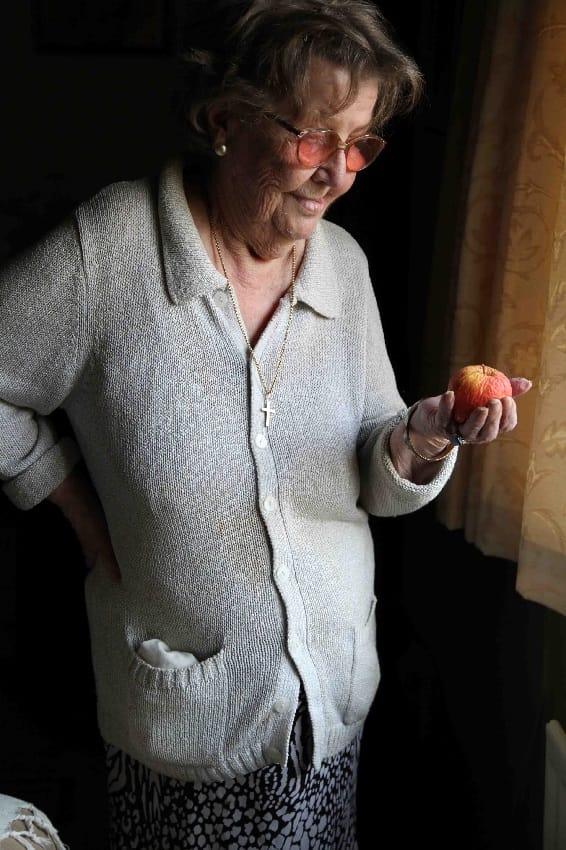
Loneliness and Health of Older People essay
Loneliness occupies its right place beside other social and health problems of older people. There are many different types of loneliness and each type has its specific peculiarities in each age. An article for observation is “Loneliness and the health of older people” by Conor O Luanaigh and Brian A. Lawlorz that was published in International Journal of Geriatric Psychiatry in 2008. Thus, the main aim of this paper is to discuss loneliness of older people and present a summary of the article in main points.
Changes occurring in the social, cultural, meaningful and natural environment, put experts (in both contemporary psychiatric research and clinical practice) in front of the need to study the problem of loneliness in terms of a person as the subject of life, as integral personality that consciously chooses the direction and ways of building the own way of life in an unstable world. The biggest problems in addressing these issues occur with those social groups who by virtue of objective and subjective factors can not help themselves without help of other people. Elderly people are one group of the above mentioned social groups with problems. Their social and psychological insecurity, vulnerability do not allow them to solve independently the emerging problems in modern society.
Defining loneliness Luanaigh & Lawlorz (2008) stated that “Loneliness can be defined as a subjectively experienced aversive emotional state that is related to the perception of unfulfilled intimate and social needs.” According to them loneliness can be divided into two major types such as social and emotional loneliness that can occur independently or co-exist with each other. So, thinking about loneliness and basing on its descriptions in the article it is possible to say that loneliness is the socio-psychological phenomenon, emotional state associated with a lack of close, positive emotional bonds with people and / or the fear of loss as a result of forced or having psychological causes social exclusion. As part of this concept two different phenomena are known – a positive (solitariness) and negative (isolation) loneliness; but often the concept of loneliness has negative connotations. It is also necessary to add that the problem of determining the concept ‘loneliness’ is associated with a variety of interpretations of this concept among different researchers: the feeling of loneliness and social isolation, painful experience of forced isolation and voluntary seclusion associated with an existential search. Feeling of loneliness performs a regulatory function and is included in a feedback mechanism that helps the individual to regulate the optimal level of interpersonal contacts.
It is a well-known fact that loneliness is a common phenomenon in large cities, where communication with different people has short and superficial character, and there is always lack of time to establish long and trusting relationship. Every person knows the felling of loneliness and, for instance, a young man or woman who can not find a suitable partner can feel loneliness, or an elderly man who had lost friends and relatives and is not able to find common language with the younger generation. Into the acknowledgement of this fact Luanaigh & Lawlorz (2008) wrote that “the distinction between emotional and social loneliness may be particularly relevant for studies among older people because, due to the death of aging relatives and friends, the probability of having or finding an intimate attachment figure decreases with age thus incidence and prevalence of emotional loneliness in particular may be raised.” Loneliness is often experienced by people with an inert nervous system, people who make new contacts with difficulty. In an extreme case loneliness can lead to depression.
Thinking about main factors that lead to loneliness Luanaigh & Lawlorz (2008) mentioned that in old age, the reality of aging entails a lot of reasons to be alone. For example, the person feels that old friends are died and it is impossible to replace them with new acquaintances; the idea that the person continues to exist is not a sufficient consolation for elderly people. Very often adult children move away from their parents, sometimes they do it just physically, but sometimes they need an emotional opportunity to create their personalities and have the time and opportunity to solve their own problems and relationships. Different researches presented in the article showed that old age brings fear and loneliness caused by the deterioration of health and fear of death; also such factors as age, gender, marital status, bereavement and genetic or personality factors also impact on the forming of feeling of loneliness and can provoke depression.
Thus, taking everything into the consideration and discussing different specific features of loneliness it is possible to conclude that exactly loneliness greatly impacts on physical health status and on cognitive decline of older people. Summarizing the own findings about loneliness and health of older people Luanaigh & Lawlorz (2008) stated that “Loneliness is common in older people and is associated with adverse health consequences, both from a mental and physical health point of view. It is an area that has been relatively neglected in the medical literature,” and it is impossible to disagree with these words.
In conclusion, we have discussed the article and summarized its content in main points that allow us to say that in order to adapt to the environment in the best way, every person must have both people whom he or she would be able to personally attach, and a wide circle of friends. The deficit of each of these different types of relationships can lead either to emotional, or social isolation and loneliness.

